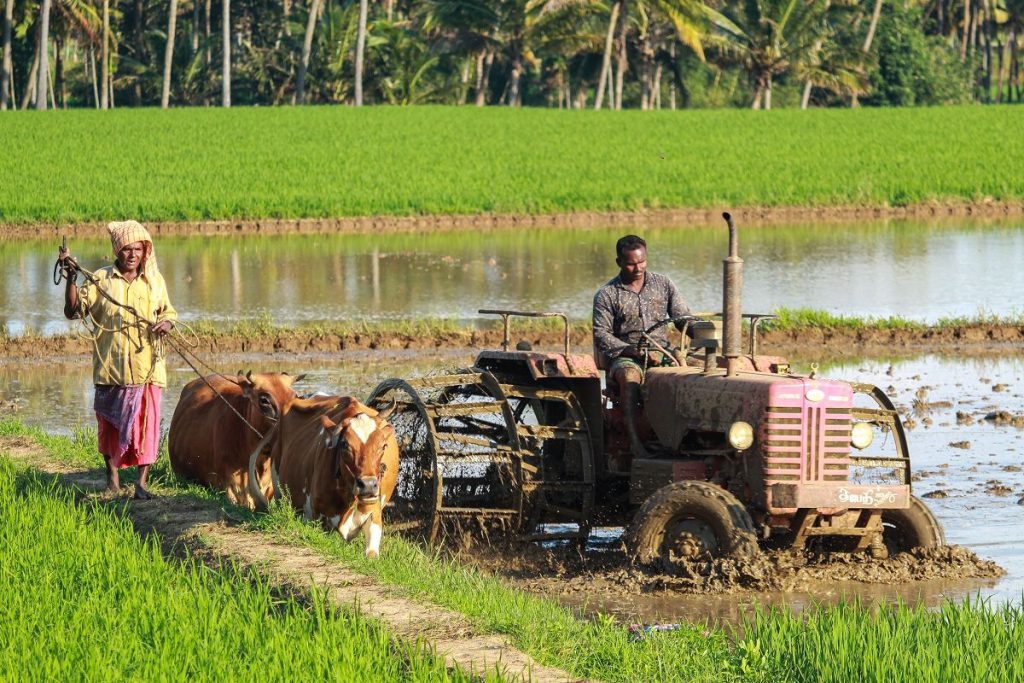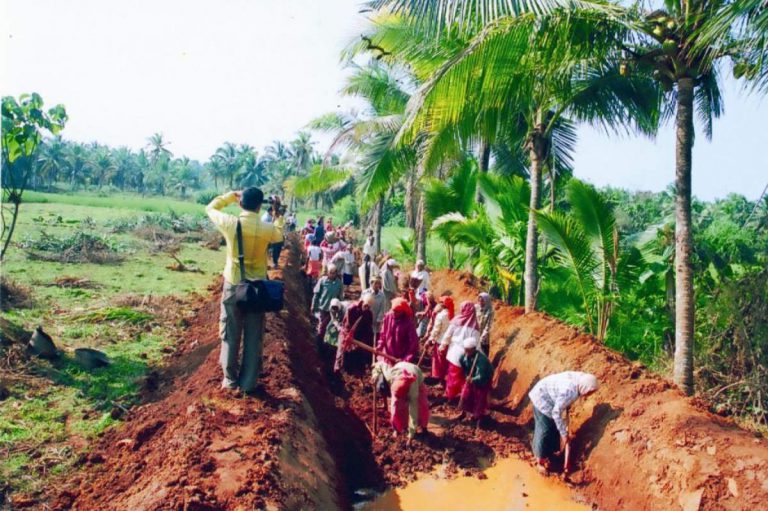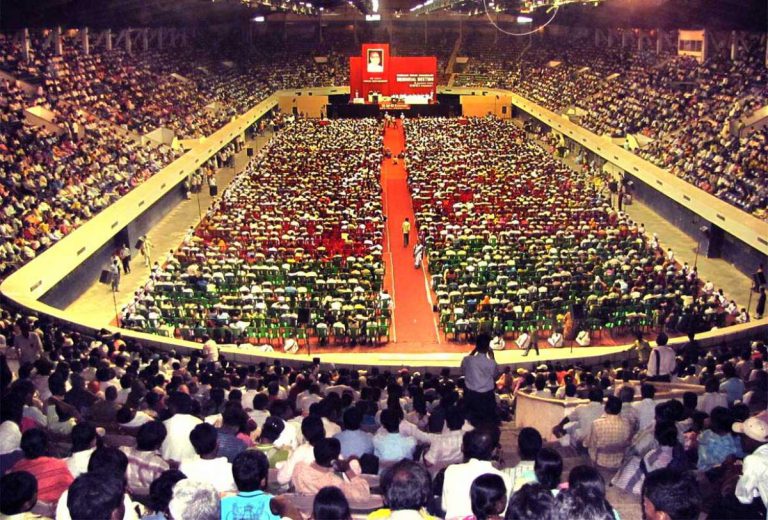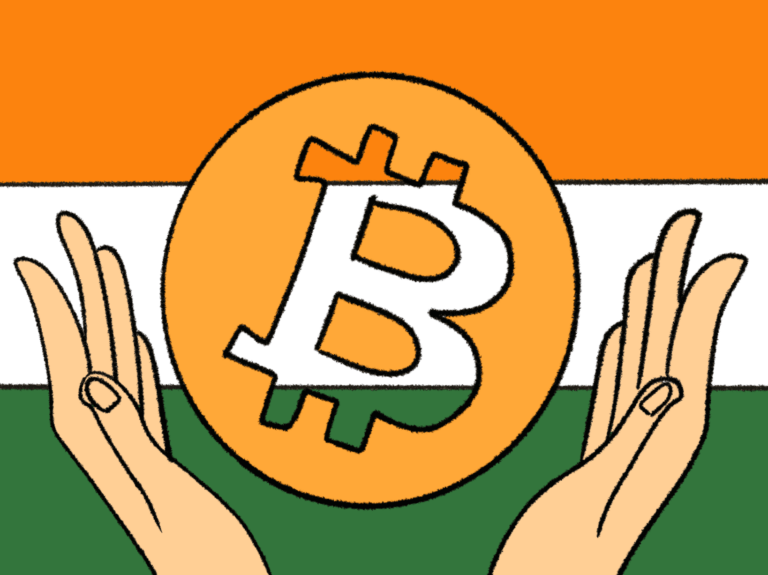On the Need for an Income Support Scheme for Farmers

Deepish was an engineer till he found out he really wasn't and movies lie about them. Currently he is searching history to find a profession for himself.

[responsivevoice_button voice=”US English Female” buttontext=”Read out this Theel for me”]
India, an enduring democratic state with a politically sensitive population, always indicated a significant focus on the growth of agriculture and the plight of its peasants. Be it Jawaharlal Nehru, Indira Gandhi or Narendra Modi, a strong assertion was made on improving the condition of peasants for a positive economic trajectory and a self- reliant economy. But 70 years down the lane, an average Indian peasant still reels under burgeoning debts, tottering prices, and shrinking lands. National Crime Record Bureau data show that 10, 349 farmers and farm workers committed suicide in 2018, and an estimated 3 lakh farmers committed suicide primarily due to unpaid loans between 1995- 2014. According to NSSO data, 52% of agricultural households in India were in debt and almost 1/5th of rural households lived below the poverty line marking a long shadow on India’s agricultural sector. Significantly, India is also the world’s largest producer of milk, pulses, and spices, and has the world’s largest area under wheat, rice, cotton. In India, addressing these irregularities to resuscitate the agricultural sector assumes particular urgency or else it may spark a huge humanitarian crisis having a socio-economic implication on the progress of India.
Agricultural policies in India have been mired in the federal structure which bestows constitutional responsibility on the state governments for legislation and central government for developing national approaches and distributing funds. This has hampered the growth of a holistic model for solving some of the structural problems that have recurred in the agricultural sector. Nevertheless, there is a need for synergy between the state and Centre’s policies to remedy the structural problems plaguing the overall growth of agriculture in India.
The Need for Augmenting Farm Incomes
According to the Dalwai committee report, the average income of a farmer is estimated at Rs 77, 976 per year1, far below the per capita income of India Rs 1, 35, 0502. Farmers in India are affected by a combination of complex factors like irregular monsoon, excessive stress on land, lack of technological upgradation, weak supply chain, inefficient domestic markets, and export restrictions. Despite large subsidies to fertilisers, power, and irrigation, which offset somewhat the price-depressing effect of market interventions, the overall effect is that policy intervention actually reduces gross farm revenues by over 6% per year (2014-16). India contrasts with OECD countries for a negative overall producer support estimate of 14%, a concomitant of asymmetrical policy interventions and an inefficient supply chain.
India’s agricultural policy intervention takes place predominantly through subsidies and minimum support price, which also differs significantly from state to state. Recent studies have shown that farm subsidies which amount to almost 2- 2.25% of GDP may lead to overuse of fertilisers or pesticides and water, and have a long term negative effect on agriculture. A NASA research on groundwater usage in northern parts of India found that many areas could face a severe water crisis due to overexploitation of groundwater for irrigation. In the case of MSP just 12% of the 33.6% million farmers had availed it for wheat for the year 2018- 19, the government intervention has failed to increase the reach and income of farmers. Unless handled carefully agricultural subsidies and MSP will undermine efforts to make agriculture more sustainable and will send unclear signals about food prices. There is a need for a different approach. As Ashoka Gulati argues, “increasing minimum support price (MSP) cannot be the solution. We may have to bring in science and our understanding to solve [the] problem.”
Providing income support to farmers would be a better option for augmenting the income of farmers. India’s pro-consumer policies coupled with decreasing global commodity prices has bogged the prices of Indian agricultural produce and there is a need to directly provide cash to the hands of farmers. Though the Central Government has come up with a limited direct benefit transfer through PM- KISAN, it is the state governments which are setting examples. Chhattisgarh’s Rajiv Gandhi Kisan Nyay Yojana (RGKNY) transfers an income of Rs. 10, 000 per acre for paddy farmers and 13, 000 per acre for sugarcane farmers, effectively incentivizing the farmers to use the money for inputs.
Chhattisgarh is not the first state to take up a cash transfer for farmers, earlier Telangana transferred Rs 5000/ acre, per season, Odisha’s KALIA scheme, and West Bengal’s Krishak Bandhu had done the same. A recent SBI report noted that an unconditional cash transfer for farmers will have a meaningful effect to iron out the structural problems the agricultural sector is facing. An income support scheme will also spur up the demand and create a trickle-up or fountain effect to bolster the sagging economy.
India, a federation of mini countries will require the active role of Indian states in building an efficacious income support structure for farmers.
- One of the problems of implementing a universal income support scheme for farmers is that land sizes differ across states and there is quality data available on land holdings. Government data show only 10 per cent tenancy in the country while some other studies have put the figure at 25- 30 per cent. Hence, central government must enable a data collection model but allow the states to set requirements for income support. This would prevent leakages and ensure income support is not given to absentee landlords.
- The total expenditure of paddy cultivation over one hectare in Andhra Pradesh is Rs 80,303 whereas, In Uttar Pradesh, the expenditure of paddy cultivation for the same area is Rs 58,429. Hence, there is a need for states to independently conduct surveys to estimate farmers’ income. Currently, the two surveys- National Account statistics and NSSO generating estimates of farmers’ income adopt different definition of farmer household and vary significantly in their final estimates. This will build strong data for better analysis and also enable a more localized approach.
- It is axiomatic that as the Centre controls the finance, they also exercise control in planning policies. But such a universal approach will not transfer the benefits effectively and there needs to be scope for the states to model the cash benefit transfer based on the crops that can be produced locally with limited expenditure. This will incentivize farmers to move away from producing crops which attracted high MSP due to universal centre policy.
- A National Bank for agriculture and rural development (NABARD) survey revealed that the average landholding size of a rural household has shrunk to 1.1 hectare (Ha) in 2015-16 from 1.6 hectare in 2012-13. The role of the states to identify the reasons for shrinking of the land is vital for avoiding disguised unemployment and providing alternative jobs for the excess workforce. An income support scheme would support the already existing central schemes like Mudra loans.
Time has come to have a different and more nuanced outlook in solving the problems of agricultural sector and that approach also has to contend with the federal structure of our polity. Federalism allows India to cater to different aspirations and problems arising from different corners in a potent way. There is a need for better collaboration between the centre and the states to ameliorate the condition of farmers through an income support scheme that would serve as a mechanism to improve their condition and the health of the economy.
Footnotes
1 Report of the Committee on Doubling Farmers’ Income (2018).
2 “Data: Ministry of Statistics and Program Implementation: Government Of India.” Data | Ministry of Statistics and Program Implementation | Government Of India. Accessed June 20, 2020. http://mospi.nic.in/data
Featured Image Credits: Rajesh Ram on Unsplash








